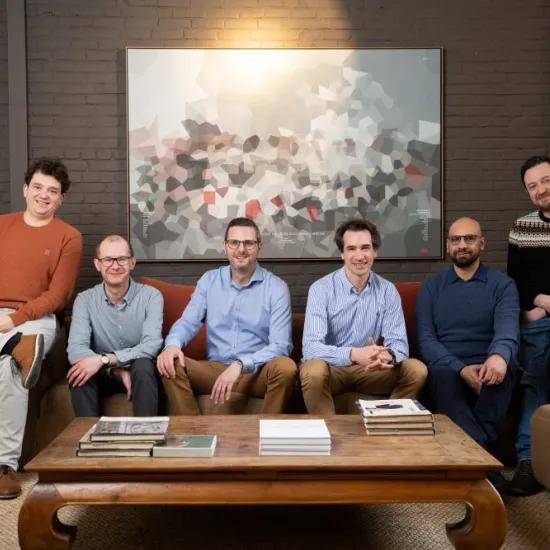The InsightProducts project focused on supporting companies to improve their product and service offering through a cost-effective approach to relevant and qualitative product data acquisition and use, in view of digital servitisation. In what follows, a short overview of the main project results is provided.
November 18th, 2020 marked the final user group of the InsightProducts project. The project, led by Sirris in cooperation with German partners Hahn-Schickard and Forschungszentrum Informatik, ran from September 2018 and included an industrial user group of 25 companies from both Belgium and Germany. InsightProducts focused on supporting companies to improve their product and service offering through a cost-effective approach to relevant and qualitative product data acquisition and use, in view of digital servitisation.
Project results
The main project results were situated around three areas: technological building blocks, industrial demonstrators, and knowledge transfer, dissemination & exploitation.
Technical building blocks
The technological building blocks included the design of an open modular architecture, the selection of suited sensors and communication technologies, and the exploration of product insights based on the captured product monitoring data. Taking into account current best practices, we investigated the following aspects:
- A guided design process highlighting the selection process of specific technologies and building blocks - from sensors, communication, messaging to data handling - based on an in-depth overview of available technologies and on an in-depth evaluation of application requirements. The final result included an extensive overview of available technology building blocks and decision trees depending on the application requirements consisting of:
- Secure design of IoT systems: secure reference architecture
- Technology selection: communication & data protection
- Sensor & MC selection & optimal placement
- Qualitive data acquisition & annotation
- Actionable insights extraction
- The design of a basic reference architecture for product monitoring, including examples of various domain and technology-dependent instantiations for a small prototype, an industrial clean room set-up, a distributed building environment, and a moving robot. These included the selection and validation of relevant communication, messaging and security technologies.
Industrial demonstrators
Several industrial demonstrators were realised validating the developed building blocks around the following five areas:
- Optimal use of sensor and communication solutions supported by and supporting qualitative data
- Determining how to acquire qualitative data and extracting actionable product insights from it
- Enhancing the design and operations of a product based on qualitative data insights
- Enabling a product to be deployed as a service ('product-as-a-service')
- Gaining access to customer data
These included experimentation with industrial datasets in different real-life industrial settings, design and development of several industrial sensors such as the environmental monitoring InsightPro sensor, and exploration of the benefits of fast prototyping in view of initial product monitoring through the SPICY demonstrator.
Knowledge transfer, dissemination & exploitation
Finally, at the level of knowledge transfer, dissemination & exploitation, the following main results were achieved:
- Extensive overview of guidelines on requirements, architectural design and available technologies and their selection
- Several dissemination activities reaching over 170 companies through participation in external events
- InsightProducts events, reaching 21 extra companies, including a dedicated public workshop in October 2019
- Exploitation activities consisting of the set-up of several national and European projects some of which have already been accepted or running
InsightProducts paved the road to collecting and mining qualitative data on products through a stepwise approach from architectural design, to technological adoption (proper data handling and processing techniques, improved sensor design & deployment), fast prototyping resulting in the SPICY experimentation toolkit (blog and videos to follow), and finally product services and cost.
In the next blog we will present the SPICY experimentation toolkit for fast prototyping of secure product monitoring solutions, built in the context of this project.
With the support of:








